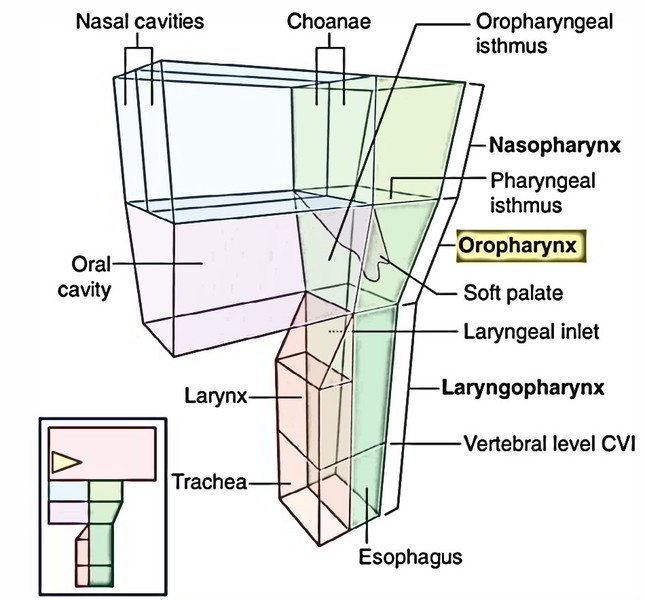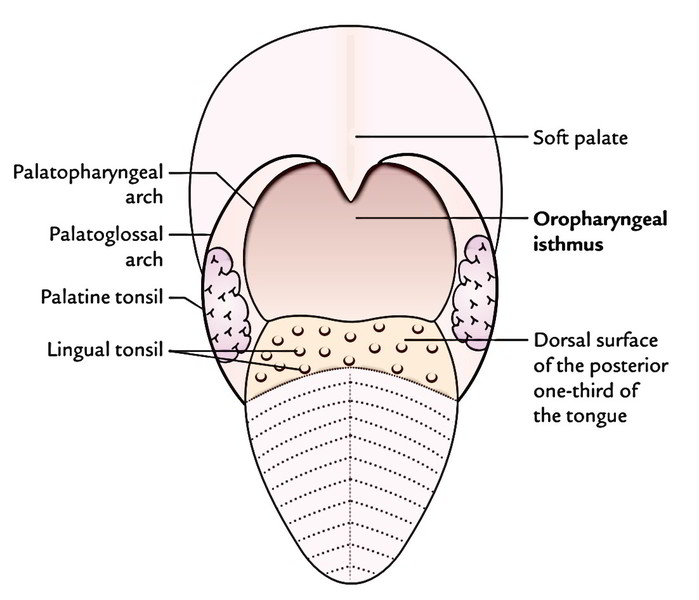It goes from the lower surface of the soft palate above to the upper border of epiglottis below and is located behind the oral cavity.
Borders
Roof: It’s created by:
- Soft palate (under surface).
- Pharyngeal isthmus via which it conveyed with the nasopharynx.
Floor: It’s created by:
- Posterior 1/3rd of the tongue.
- Separation between the tongue and epiglottis.
Anterior wall: It’s incomplete and created by:
- Oropharyngeal isthmus (via which it opens into the oral cavity).
- Pharyngeal part of the tongue.
Posterior wall: It’s created by body of C2 vertebra and upper part of the body of C3 vertebra.
Lateral wall: On every side, it’s supported by pterygo-mandibular raphe, mandible, tongue and hyoid bone.
The oropharynx gives common path for the food and air.
Features
The features observed in the oropharynx are:
- Lateral wall presents palatine tonsils, 1 on either side.
- It’s found into a triangular fossa (tonsillar fossa) bounded anteriorly by palatoglossal arch and posteriorly by palatopharyngeal arch.
- The palatoglossal arch runs downwards and forwards from palate to the lateral margin of the tongue.
- The palatopharyngeal arch runs downwards and backwards to the pharyngeal wall where it fades out.
Anterior wall gifts:
- Lingual tonsil, created by numerous nodules of lymphoid tissue underneath the mucous lining of the pharyngeal part of the dorsum of the tongue.
- Upper free end of epiglottis, behind the tongue.
- Median and lateral glossoepiglottic folds, linking the anterior surface and borders of the epiglottis, respectively to the tongue.
- Epiglottic valleculae are shallow fossae between the median and lateral glossoepiglottic folds.
Oropharyngeal Isthmus
It’s an arched opening between the 2 palatoglossal folds via which the oral cavity interacts with the oropharynx. Its borders are as under:
Above: Soft palate.
Below: Dorsal surface of the posterior one-third of thetongue.
Lateral: Palatoglossal fold/arch on each side featuring palatoglossus muscle.
The oropharyngeal isthmus is closed during deglutition to stop regurgitation of food from the pharynx to the mouth.
Clinical Significance
Since the routes for food and air cross every other in the oropharynx, the food occasionally may goes into the respiratory tract and cause choking. Likewise the air frequently enters the digestive tract generating gas in the stomach, which leads to eructation (belching).



 (56 votes, average: 4.90 out of 5)
(56 votes, average: 4.90 out of 5)